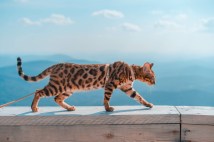The Grand Canyon is not only a stunning natural wonder, but it is also home to a diverse array of wildlife. Among its most fascinating inhabitants are the mammals that roam its rugged terrain and lush landscapes. This article will provide an overview of some of the key mammal species found in this iconic national park, showcasing their unique adaptations and roles within this intricate ecosystem.
The Iconic Bighorn Sheep
One of the most well-known mammals in the Grand Canyon is the California bighorn sheep. These agile climbers can often be seen on steep cliffs, effortlessly navigating rocky outcrops. Their strong legs and specialized hooves allow them to traverse the challenging terrain with ease. Bighorn sheep are social animals that live in groups, and during mating season, males engage in impressive head-butting displays to establish dominance.
Elusive Mountain Lions
Mountain lions, also known as cougars or pumas, inhabit various regions within the Grand Canyon. These elusive predators primarily hunt at dawn and dusk, making them difficult to spot for visitors. They rely on their keen senses and powerful build to stalk prey such as deer and smaller mammals. Although mountain lions generally avoid human contact, they play an essential role in maintaining balance within the ecosystem by controlling herbivore populations.
Mischievous Coyotes
Coyotes are another common sighting throughout the Grand Canyon region. Adaptable and intelligent, these canines thrive in various environments from deserts to forests. Often heard howling at night or seen scavenging for food during daylight hours, coyotes exhibit clever hunting strategies—sometimes even working together in packs to chase down larger prey like deer or rabbits while also scavenging when necessary.
The Playful River Otter
Alongside rivers and streams within the canyon’s depths lives one of its more playful residents—the river otter. These aquatic mammals are known for their playful behavior both on land and water as they slide down muddy banks or chase after fish and crustaceans in rivers like the Colorado River flowing through the canyon. River otters possess thick fur that keeps them warm while swimming even in cold waters.
Small Wonders: Rodents and More
The Grand Canyon is also home to several smaller mammal species such as squirrels, chipmunks, voles, and various rodents that contribute significantly to its biodiversity. These small creatures serve as important food sources for larger predators while playing vital roles in seed dispersal which helps maintain vegetation health across this vast landscape.
In conclusion, exploring wildlife such as mammals at Grand Canyon National Park offers an incredible way to connect with nature while appreciating its complexity through each resident’s lifestyle adaptations. Whether you’re lucky enough to spot a bighorn sheep scaling cliffs or hear coyote calls echoing under starry skies above—you’ll gain deeper insight into why preserving these habitats matters so much.
This text was generated using a large language model, and select text has been reviewed and moderated for purposes such as readability.






